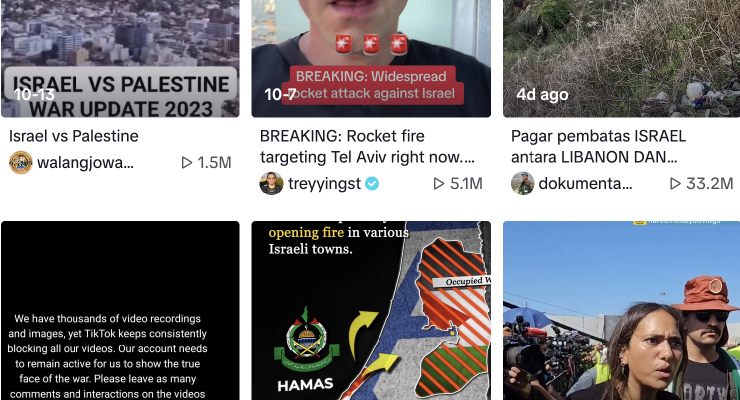
If you’ve used any social media platform this month, you are likely to have been confronted with graphic fragments from Hamas’ attacks on Israeli civilians on October 7, and Israel’s subsequent bombardment of Gaza, whether you wanted to or not.
Footage appearing to show grainy missile launches, cityscapes reduced to rubble and charred bodies is interspersed between posts from our friends and celebrities we follow.
This conflict marks the end point of a bigger trend. The era of social news — when we could trust social media platforms to help us understand what is going on in the world — is over. While we are more exposed to information about conflict than ever before, today’s social media platforms have given up the pretence of trying to make their users better informed about the truth of what’s happening.
Platforms such as X, TikTok, Reddit, Telegram and YouTube are overflowing with untold amounts of footage purporting to show different perspectives of what’s really happening in the conflict. Anyone with a smartphone has unfettered access to countless voices from each side of the conflict vying for your attention.
Such footage — much of it graphic — was once gatekept by mainstream media and institutions that shaped what we saw of war. Now it’s accessible to anyone thanks to ubiquitous smartphones, GoPros and security cameras. Accounts and online communities like @palestine_or_israel and r/CombatFootage have popped up to serve audiences who want to see this content. In fact, it’s impossible to miss, with platforms serving content depicting killing and cruelty to almost anyone who logs on.
But as we’re exposed to more second-hand violence daily than what we might have once over a lifetime, its value has diminished. Decontextualised accounts and footage shown to users amid a rising tide of misinformation disorients users while engaging them. Old footage, misleading framing, AI-generated content and even video-game clips have gone viral from users presenting them as updates from the ground. Official social media accounts from both sides are waging an information war, sharing footage depicting the damage inflicted by their opponents for sympathy as well as boasting depictions of their own combat ability.
What’s being offered by platforms is more and more likely to confuse or mislead than enlighten, thanks to Silicon Valley’s growing disinterest (or outright animosity) towards news and authoritative information sources along with the increasingly sophisticated and polished platform manipulation tactics.
Once a platform called Twitter that was the beating heart of information online, Elon Musk’s X is overrun with misinformation, primarily coming from users who have paid for greater exposure and who earn money for every view. Meta — owner of Facebook, Instagram and now X-competitor Threads — has been actively moving away from news content that it once sought as the antidote to its fake news problem. Beyond this conflict, big tech generally is creeping back from previous commitments to fight misinformation.
The people and groups hoping to take advantage of these systems have become more sophisticated, too. From the Israel Foreign Affairs Ministry to random social media users like Instagram account @palestine_2023_underattack, people are paying for social media advertisements to target and amplify their posts. E-commerce stores selling drop-shipped goods with dubious promises to donate profits and cryptocurrency scams emerged mere hours after fighting began as grifters and opportunists hoped to cash in on the world’s attention.
The era of social news has always been flawed. It’s always been unfairly weighted towards conflict, emotion and speed over nuance, patience and legitimacy. There’s never been balance. People have always been best served by scepticism when viewing information served to them. But recent changes — even those made since the invasion of Ukraine as recently as last year — have tipped the balance so that there’s little hope that any casual social media user will gain an understanding of what’s happening in Israel-Palestine from these platforms.
The accord between social media companies and their users has been broken. Social media doesn’t provide a window into the real world anymore. It’s been replaced with a funhouse mirror that warps, populated with visions of people trying to convince you that it’s real.








Crikey encourages robust conversations on our website. However, we’re a small team, so sometimes we have to reluctantly turn comments off due to legal risk. Thanks for your understanding and in the meantime, have a read of our moderation guidelines.